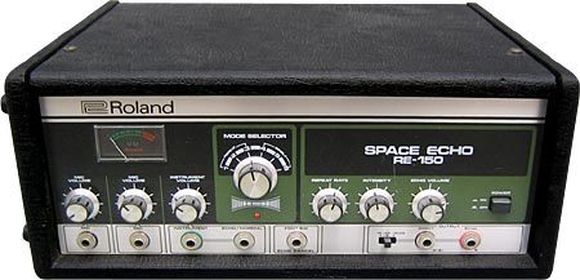7. Delay
If you've ever hopped on a train and stared at those timetable displays, the word "delay" probably hits home. But don't worry, we're not in train territory here! Unlike train delays, we're all good with delay times around 2-3 seconds.
When it comes to natural echoes, like the sound bouncing off a mountain or a wall, it's like a solo performance - each echo is clear and separate. To make a sound echo multiple times, it has to bounce again and again. In the olden days, tape loops were the way to create artificial echoes.

The ultimate tape echo: Roland Space Echo
In digital devices, the trick is recording the sound and holding it in memory to create delays. You make those multiple echoes by feeding them back into the sound input.
Now, remember these two key settings for your delay:
- Delay time (how long you wait for the echo)
- Number of repetitions (how many echoes you get)
Here's a cool tip:
When your delay time is below 50ms (like what happens in reverb), it stops feeling like echoes. Experiment with delay times from 10 to 40 ms and keep the feedback somewhat low. You'll get an intriguing reverb-like effect, especially for drums and percussion!



